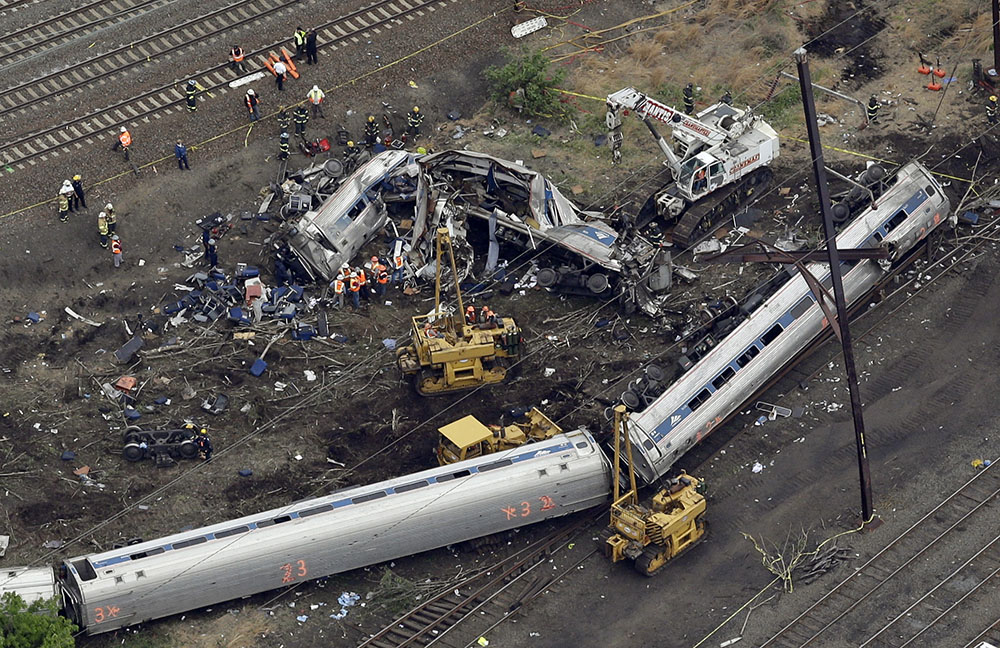Amtrak Train Derailed in Philadelphia Was Speeding
Thursday, May 14th, 2015A federal investigation by the National Transportation Safety Board (NTSB) has revealed that an Amtrak train that derailed and crashed in north Philadelphia on Tuesday, May 12, was traveling at 106 miles (171 kilometers) per hour, more than double the speed limit of 50 miles (80 kilometers) per hour. The train was traveling from Washington, D.C., to New York City. At the time of the crash, it was on a portion of track that curved sharply to the left. The engineer applied the emergency brake, which slowed the train only minimally. At least eight people on board the train were killed, and more than 200 were injured. Several still had not been accounted for as of Thursday, May 14.

Emergency personnel work at the scene of a deadly train derailment in Philadelphia on Wednesday, May 13, 2015. The Amtrak train, headed to New York City, derailed and crashed in Philadelphia the previous night, killing at least eight people and injuring more than 200. Credit: AP Photo
Investigators had not determined why the train was traveling so fast. Officials said that a kind of track technology called positive train control (PTC) could have prevented the accident. Using Global Positioning System (GPS), wireless radio, and computers, positive train control monitors trains and can slow or even stop them. The portion of the Northeast Corridor route where Tuesday night’s accident occurred did not have such a system installed. Federal law requires passenger and freight railroads to have PTC systems working by the end of 2015, but such systems cost billions of dollars.
The lawyer for the engineer, Brandon Bostian, stated that his client had no memory of the actual crash and no explanation for it. Bostian remembered being thrown about and calling 911 following the derailment. Officials of the NTSB said they did not know yet whether the train had accelerated steadily or suddenly to reach 106 miles per hour. Besides the high speed of the train, they were investigating such factors as track conditions, the mechanical condition of the train, and train signals.
Other World Book articles:


